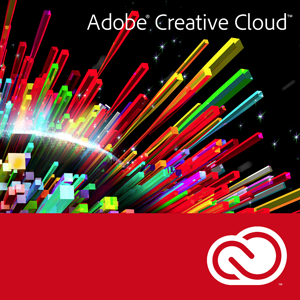Pros and Cons of Adobe Creative Cloud
 This article has been contributed by Vincent Brasseur of Flexera Software.
This article has been contributed by Vincent Brasseur of Flexera Software.
On May 6th 2013 Adobe has announced that it will move away from perpetual licenses for Creative Suite products. Following this announcement, since June 17th 2013, all new Creative Suite products are now only available through subscriptions. They have been rebranded as Creative Cloud products.
This change has brought some misconceptions due to the “cloud” reference in the branding and features provided with the new products through the cloud infrastructure. The products are not delivered through the Software as a Service (SaaS) model that is commonly found in the cloud; they are downloaded from the cloud and installed locally on devices. There is no change here, except that from time to time the software will connect to the internet and validate the license. Additional cloud features are delivered with these products such as the capability to store files, up to a specific limit in the cloud, or file sharing and collaboration. From the licensing side, it is a basic subscription and this is the most visible change of all: customers will no longer be able to purchase perpetual licenses; these products are now offered only through subscriptions.
Creative Cloud products come in four plans: Individual, Teams, Enterprises and Education. The benefits of the Creative Cloud for Teams edition include the ability to provide a centralized administration, licensing and purchasing console with the flexibility to add or reassign seats as needed, shared storage in the cloud, access to Adobe experts (two sessions per user, per year) and central deployment. It requires an annual commitment.
One of the strong limitations of the Teams edition is that it provides only the full suite of products; subscriptions for individual applications are not available. If a user only needs Illustrator, subscribing to the Teams edition ($69.99/month) will cost up to three and half times the price of an Individual subscription for a single application ($19.99/month). The other issue here is that Individual subscriptions are separated from Teams edition ones—there is no management or data sharing possible across editions. Another limitation with the Team edition not related to licensing is that organizations can’t really prevent users from storing data in the cloud. The only solution provided is to change the organization firewall settings. The Enterprise edition is similar to the team edition but offers additional services such as custom deployment, software management through the Adobe Licensing Website (LWS), enterprise customer support and expert services from Adobe.
Pros and Cons
There are pros and cons in any subscription model:
Pros
- The biggest advantage here is to provide a low entry price to an amazing suite of products delivering high quality features.
- Free access to the latest releases of the products. Some will point out that you need to pay every month to keep the software running and pricing may not stay the same overtime compared to an upfront fixed price offered by a perpetual license.
- The cost of the subscription compared to a perpetual purchase, is worth it for many organizations. For instance, the full master collection price is about $2,500. This amount represents three to four years of subscription depending on the edition considered and does not includeupgrades, which costs about $500 when going from CS5.5 to CS6. In this case, the subscription is very attractive.
Cons
- Editions such as Design Standard ($1,299) are less attractive as the subscription price is still the same; over three years, the subscription price will be more expensive than a perpetual license.
- Overall on the very long run, a subscription will typically always be more expensive: rather than collecting $600 to upgrade products every 2-3 years from perpetual licenses, Adobe will get about the same amount or more every year with subscriptions.
- Adobe could always raise the subscription prices in the future.
Automated Cloud Compliance?
With a subscription model and internet validation from time to time, compliance of Creative Cloud products should not be an issue.
Organizations should be always compliant as the mechanism to avoid under licensing situations is included in the product. This assumption may be defeated by illegal installations: the Creative Cloud products have been already hacked and are available for download from pirate web sites. If an organization has only valid subscription installations, software license optimization needs to be performed to avoid over-buying.
With perpetual licenses, installations can reside forever on devices. When a user requests access to an application and no more licenses are available from the organization’s licensing pool, then license re-harvesting can occur to locate unused installations of the product that can then be reallocated. With the subscription model, it works almost the same way but there are few caveats. For individual licenses with no commitment, constant monitoring is needed. As soon as an application is no longer being used by a given user, there is no compelling reason to pay the monthly fee. For all licenses with yearly commitment, monitoring usage prior to the anniversary date will be required to renew only the seats needed. Note that with the Creative Cloud for teams, licenses can be added at any time but they all co-terminate at the anniversary date of the membership.

Vincent Brasseur, Flexera Software
Perpetual to Cloud Migration
Adobe offers incentives to migrate existing perpetual licenses to subscription. Again, depending on what licenses the organization currently owns, the offer may or not be attractive. Some organizations will take the opportunity to go full subscription. It is likely that many customers will carry a combination of perpetual and subscription licenses for many years; not all users migrate to the latest release or need to get the additional benefits offered by the subscription. In the short run, this will add a bit of complexity to license management rather than simplification; figuring out the overall license compliance position for the organization will require sorting out each installation according to its licensing model. When a user requests a license, perpetual licenses should be allocated first and then subscriptions, if available, should be used.
Adobe has been incredibly successful with the Creative Cloud offering. So far they have 700,000 subscribers as of the end of June, well ahead of its 600,000 subscriber goal. It will help bring many organizations into license compliance and avoid costly software audits; however, it will not help organizations to optimize licenses and driving their costs down. This is the purpose of Software License Optimization tools such as FlexNet Manager for Adobe.
This article has been contributed by Vincent Brasseur of Flexera Software.
Can’t find what you’re looking for?
More from ITAM News & Analysis
-
Broadcom vs Siemens AG - A Brewing Storm
The ongoing legal battle between VMware (under Broadcom ownership) and Siemens is yet another example of why ITAM goes far beyond license compliance and SAM. What might, at first glance, appear to be a licensing dispute, ... -
Shifting Left Together: Embedding ITAM into FinOps Culture
During one of the keynotes at the FinOps X conference in San Diego, JR Storment, Executive Director of the FinOps Foundation, interviewed a senior executive from Salesforce. They discussed the idea of combining the roles of ... -
Addressing the SaaS Data Gap in FinOps FOCUS 2.1
I recently reported on the FinOps Foundation’s inclusion of SaaS and Datacenter in its expanded Cloud+ scope. At that time, I highlighted concerns about getting the myriad SaaS companies to supply FOCUS-compliant billing data. A couple ...
Podcast
ITAM training
Similar Posts
-
Broadcom vs Siemens AG - A Brewing Storm
The ongoing legal battle between VMware (under Broadcom ownership) and Siemens is yet another example of why ITAM goes far beyond license compliance and SAM. What might, at first glance, appear to be a licensing dispute, ... -
Microsoft Power Apps: Current Pricing Models Comparison
Back in November 2021, Microsoft made Power Apps available under the pay-as-you-go (PAYG) model, alongside the traditional Per User/Per App options. This PAYG model has gained popularity. It ensures simple rightsizing for Power Apps environments. Here, ... -
Microsoft Q3 Soars as AI and Azure Growth Fuels Market Gains
On the 30th April, Microsoft released its Q3 quarterly earnings report, exceeding expectations and igniting investor optimism. Investors had been keeping a watchful eye on Azure’s Cloud performance after Microsoft’s Q2 Cloud results fell short of ... -
The High Cost of Oracle Java: Managing Expenses and Operational Efficiency
For businesses reliant on Java, Oracle’s licensing model presents a formidable challenge. Once a freely available technology, Java has evolved into a costly necessity for enterprises, with licensing changes leading to widespread financial and operational concerns. ...




